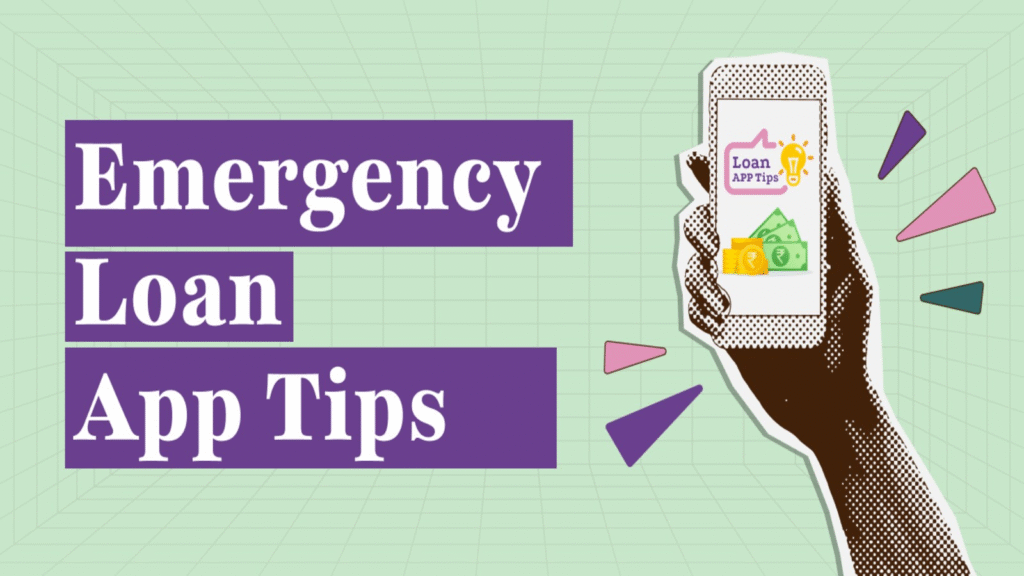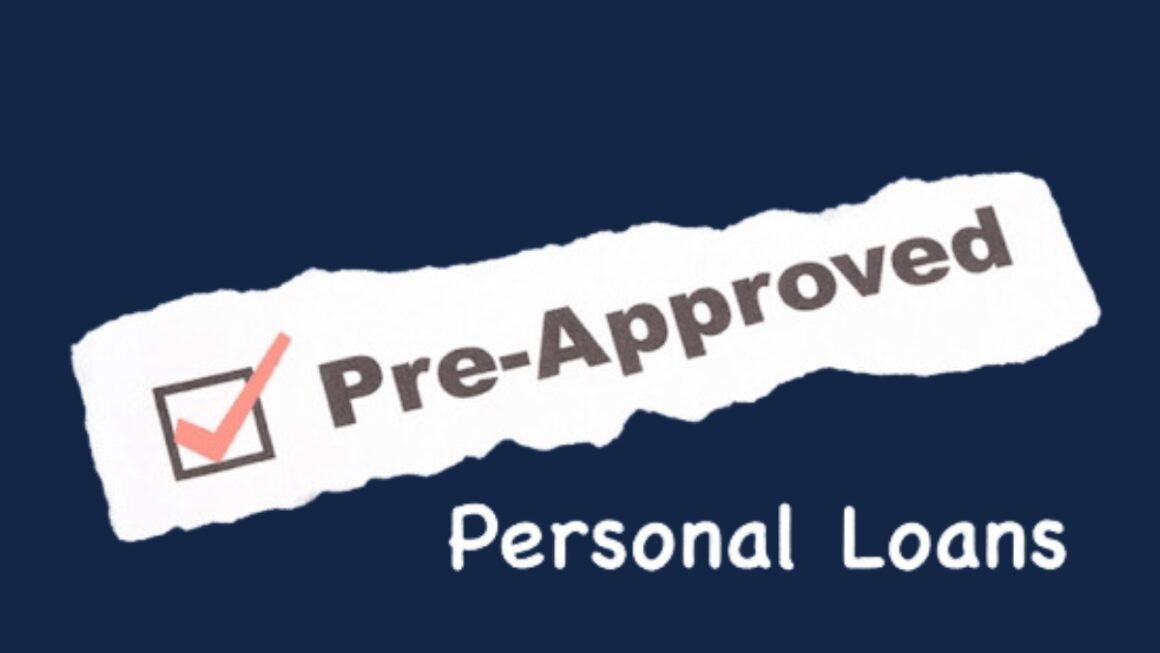Personal Loan In Before the 1990s, personal loans in India were primarily offered by public sector banks fast-paced financial landscape, securing a personal loan can be a daunting task. However, with the advent of pre-approved personal loans, the process has become more streamlined and accessible. This guide delves into the intricacies of personal loan pre-approval, offering insights into its benefits, eligibility criteria, application process, and more.
Key Takeaways
Pre-Approval Simplifies Borrowing
Personal loan pre-approval gives you a preliminary assessment of how much you can borrow and at what terms, saving time and streamlining the application process.
Eligibility Depends on Multiple Factors
Lenders evaluate your credit score, debt-to-income ratio, employment stability, existing debts, and banking history before issuing a pre-approval offer.
Credit Score is Crucial
Maintaining a good credit score (usually above 650–700) significantly improves your chances of pre-approval and securing better interest rates.
Lower Debt-to-Income Ratio Improves Eligibility
A healthy balance between your income and existing debts assures lenders of your repayment capacity, increasing the likelihood of pre-approval.
Stable Employment Boosts Confidence
Consistent, long-term employment with verifiable income provides lenders with assurance that you can repay the loan.
Pre-Approval is Not Final Approval
Pre-approval is based on preliminary information and soft credit checks; final loan approval requires thorough document verification and may differ.
Beware of Scams and Unverified Lenders
Always confirm the lender’s credentials, avoid upfront fees, and use secure websites to protect yourself from fraudulent loan offers.
Documentation Should Be Ready and Accurate
Having your ID, address proof, income statements, and bank statements up to date helps speed up the final approval process.
Compare Multiple Offers
Don’t settle for the first pre-approved loan offer. Comparing interest rates, fees, and terms across lenders ensures you get the best deal.
Use Pre-Approved Loans Responsibly
Treat your pre-approved loan as a financial tool, not free money. Borrow only what you need and ensure timely repayments to maintain a healthy credit profile.
What is Personal Loan Pre-Approval?
Personal loan pre-approval is a preliminary evaluation by a lender to determine your eligibility for a loan amount without a hard credit inquiry. Personal Loan This process involves a soft credit check and provides you with an estimate of the loan amount, interest rate, and repayment terms you might qualify for.
Understanding the Pre-Approval Process
The pre-approval process typically involves the following steps:
- Credit Assessment: Lenders evaluate your credit score and history to gauge your repayment behavior.
- Income Verification: Your income sources are verified to ensure you can repay the loan.
- Pre-Approval Offer: Based on the assessment, lenders provide a pre-approval offer detailing the loan amount, interest rate, and tenure.
Benefits of Personal Loan Pre-Approval

- Quick Access to Funds: Pre-approved loans often come with faster processing times, allowing you to access funds promptly when needed.
- Competitive Interest Rates: Lenders may offer lower interest rates to pre-approved borrowers, as they have already assessed your creditworthiness.
- Minimal Documentation: Since the lender has pre-assessed your financial status, the documentation requirements are typically reduced.
- Flexible Loan Amounts and Terms: Pre-approval provides clarity on the loan amount and repayment terms, helping you plan your finances better.
- Improved Negotiation Power: With pre-approval, you have a clearer understanding of your borrowing capacity, enabling better negotiations with lenders.
Eligibility Criteria for Personal Loan Pre-Approval
While specific requirements may vary among lenders, common eligibility criteria include:
- Age: Typically between 21 and 60 years.
- Income: A minimum monthly income, often around ₹25,000.
- Employment Status: At least 2 years of total work experience, with a minimum of 1 year with the current employer.
- Credit Score: A good credit score, usually above 650, is preferred.
- Existing Relationships with Lenders: Having an existing relationship with the lender can increase your chances of pre-approval.
Documents Required for Pre-Approval
Depending on the lender, you may need to provide:
- Identity Proof: Aadhaar card, PAN card, passport, etc.
- Address Proof: Utility bills, rental agreements, etc.
- Income Proof: Salary slips, bank statements, tax returns.
- Photographs: Passport-sized photos.lendzy.in+1thehindu.com+1
How to Apply for Personal Loan Pre-Approval
1. Check Your Credit Score
- Before applying, verify your credit score using credit bureaus like CIBIL, Experian, or Equifax.
- Ensure your score meets the lender’s minimum eligibility (typically above 650 for most lenders).
- If your score is low, take time to improve it by clearing dues and correcting errors.
2. Review Your Financial Status
- Assess your current income, monthly expenses, existing debts, and financial obligations.
- Calculate your debt-to-income (DTI) ratio—a critical factor lenders consider.
- Ensure you have sufficient income to comfortably repay the loan EMI.
3. Research and Compare Lenders
- Explore various banks, NBFCs, and online lenders to find competitive interest rates and flexible repayment options.
- Read reviews and check lender credibility.
- Pay attention to fees like processing charges and prepayment penalties.
4. Pre-Qualify Online
- Use lenders’ online pre-qualification or eligibility check tools, which involve a soft credit check that doesn’t affect your credit score.
- This step gives you an estimate of your loan eligibility and likely interest rate without a full application.
- Narrow down your options based on the offers you receive.
5. Submit Required Documents
- Prepare and upload documents such as:
- Identity proof (Aadhaar card, PAN card, passport)
- Address proof (utility bill, voter ID)
- Income proof (salary slips, bank statements, ITR for self-employed)
- Employment proof if required
- Ensure all documents are current and legible to avoid delays.
6. Wait for Pre-Approval
- After submission, the lender will verify your details.
- You’ll receive your pre-approval status, which usually includes the maximum loan amount you qualify for, tentative interest rate, and terms.
- Pre-approval is not a guarantee of final loan sanction; it’s subject to further verification and document validation.
Factors Affecting Personal Loan Pre-Approval
1. Credit History
- A clean credit history with consistent, timely repayments signals reliability to lenders.
- Avoid defaults, late payments, or credit card delinquencies.
- A higher credit score (usually above 700) often leads to better interest rates and approval chances.
2. Debt-to-Income (DTI) Ratio
- This ratio compares your monthly debt obligations to your monthly income.
- A lower DTI ratio (typically below 40%) suggests you have enough income to manage new debt comfortably.
- High existing debts can indicate over-leverage, making lenders cautious.
3. Employment Stability
- Lenders prefer applicants with stable, long-term employment.
- A steady income stream assures them of your repayment capacity.
- Self-employed individuals should demonstrate consistent business income and file accurate tax returns.
4. Existing Debts
- High levels of existing debt can lower your eligibility or increase the interest rate offered.
- Clearing or reducing outstanding loans before applying can enhance your chances.
5. Banking Relationship
- Having an established relationship with the lender, such as a salary account or previous loans, can be beneficial.
- Lenders often offer better terms to existing customers due to easier verification and demonstrated trust.
Common Myths About Personal Loan Pre-Approval

- Pre-Approval Guarantees Loan Approval: Pre-approval is not a guarantee; it’s an estimate based on preliminary information.
- Pre-Approval Affects Credit Score: A soft credit check during pre-qualification does not impact your credit score.
- Only Existing Customers Can Get Pre-Approved: New customers with good credit histories can also be considered for pre-approval.
- Pre-Approved Loans Have Higher Interest Rates: Pre-approved loans often come with competitive interest rates.
- Pre-Approval Means Instant Disbursement: While processing is faster, disbursement timelines can vary.
Tips to Improve Chances of Personal Loan Pre-Approval
1. Maintain a Good Credit Score
Your credit score is a critical factor in the loan approval process.
- Aim for a score above 700 for better terms and eligibility.
- Check your credit report regularly via agencies like CIBIL, Experian, or Equifax.
- Dispute any incorrect information that may be lowering your score.
- Make credit card payments on time and avoid defaults.
Tip: Set payment reminders or automate EMI/credit card payments.
2. Reduce Existing Debts
A lower debt-to-income (DTI) ratio increases your creditworthiness.
- Pay off high-interest debts like credit card balances.
- Avoid taking on new loans just before applying.
- Consolidate debt if needed to reduce monthly outflow.
Why it matters: Lenders assess your DTI to see if you can handle more credit.
3. Ensure Stable Employment
Lenders favor borrowers with consistent employment and a regular income.
- Ideally, you should have been with your current employer for at least 6–12 months.
- Self-employed individuals should maintain steady business income and file timely ITRs.
- Keep salary slips and employment proof handy for quicker processing.
4. Avoid Multiple Loan Applications
Applying for many loans in a short time can hurt your credit score.
- Each application triggers a hard inquiry, which can lower your score.
- It may also signal financial desperation to lenders.
Pro Tip: Use pre-qualification tools or check eligibility without impacting your credit.
5. Keep Documentation Updated
Ensure all your personal and financial documents are up to date and readily available:
- ID & Address Proof: Aadhaar, PAN, Passport, Utility bills, etc.
- Income Proof: Salary slips, bank statements, ITR, Form 16.
- Employment Proof: Offer letter, employment certificate, or professional license.
This streamlines your application and reduces chances of rejection due to documentation gaps.
Risks and Considerations
While pre-approved loans offer several benefits, it’s essential to consider potential risks:
- Over-Borrowing: The ease of access might tempt you to borrow more than necessary.
- Hidden Fees: Some lenders may charge processing or prepayment fees.
- Limited Loan Amounts: Pre-approved amounts may not meet your full financial needs.
- Short Repayment Periods: Shorter terms can lead to higher EMIs.
- Impact on Credit Score: Missing repayments can negatively affect your credit score.
Alternatives to Personal Loan Pre-Approval
If pre-approval isn’t an option, consider these alternatives:
- Secured Loans: Offer lower interest rates but require collateral.
- Credit Cards: Useful for smaller amounts but come with higher interest rates.
- Peer-to-Peer Lending: Borrowing from individuals through online platforms.
- Government Schemes: Explore government-backed loan schemes for specific purposes.
Absolutely! Let’s explore additional aspects of Personal Loan Pre-Approval, including emergency loan options, online loan legitimacy, and common mistakes to avoid.
Emergency Loans: Quick Solutions for Urgent Needs

Emergency loans are personal loans offered by banks, credit unions, and online lenders to provide quick cash for unexpected situations. Typically, these loans are repaid at a fixed interest rate over a specific term. Eligibility and costs are based on creditworthiness, with options available even for those with bad credit. Emergency loans usually have lower maximum amounts compared to other loan types.
How to Apply for an Emergency Loan:
Great starting point! Here’s an expanded and well-structured version of your section “How to Apply for an Emergency Loan” with more clarity, actionable steps, and professional formatting:
How to Apply for an Emergency Loan: Step-by-Step Guide
Emergency loans are designed for speed and accessibility, but following the right application process ensures higher chances of approval and better terms. Here’s how to go about it:
1. Check Your Credit Score
Before applying, review your credit report through platforms like CIBIL, Experian, or Equifax.
- A score of 650 or above improves your chances of getting favorable terms.
- If your score is low, take steps to improve it, such as paying down debts or correcting report errors.
2. Research and Compare Lenders
Different lenders offer varying interest rates, processing fees, and repayment terms.
- Compare banks, NBFCs, and digital lending platforms.
- Look for hidden fees such as prepayment penalties or late charges.
- Read reviews or customer feedback for trustworthiness.
3. Pre-Qualify Online (Optional but Recommended)
Many lenders allow you to check if you’re eligible through a soft credit check (does not affect your credit score).
- Helps you understand your potential loan amount and interest rate.
- Saves time by narrowing down suitable lenders before formal application.
4. Gather and Submit Required Documents
Ensure you have all the documentation ready before applying to avoid delays:
- ID Proof: Aadhaar card, PAN card, or passport
- Address Proof: Utility bills, rental agreement, or voter ID
- Income Proof: Salary slips, Form 16, or ITR (if self-employed)
- Bank Statements: Usually for the last 3–6 months
Some lenders may offer paperless approval for existing customers.
5. Fill Out the Application Form
You can usually apply online via the lender’s website or mobile app.
- Provide accurate information—discrepancies can lead to rejection.
- Some platforms may offer instant approval based on algorithms.
6. Wait for Approval and Disbursal
Once submitted:
- The lender conducts a credit and risk assessment.
- Approval time varies from a few minutes to 48 hours, depending on the platform and verification process.
- Upon approval, funds are typically disbursed directly into your bank account.
Tips for Faster Approval:
- Apply during business hours for quicker processing.
- Choose lenders offering instant or same-day disbursal.
- Avoid applying to too many lenders at once—it can hurt your credit score.
Pros of Emergency Loan
- Fast Access to Funds
Emergency loans are designed for speed. Many lenders offer approval and fund disbursement within hours or the same day—ideal for urgent needs like medical expenses or unplanned repairs. - Variety of Lending Options
You can choose from banks, NBFCs, fintech apps, peer-to-peer platforms, and credit unions. This variety allows borrowers to compare and find a loan that suits their financial profile and urgency. - Ease of Application
Most emergency loans come with online application processes, requiring minimal paperwork. Some platforms even offer approval with just basic KYC documents and income proof. - Flexible Fund Usage
Emergency loans are generally unsecured and do not require the borrower to declare the purpose. You can use the money for medical bills, travel, repairs, rent, or anything else that qualifies as urgent.
Cons of Emergency Loans
- Higher Interest Rates
Because these loans are unsecured and disbursed quickly, lenders may charge higher interest rates compared to regular personal loans. Rates can range from 12% to 36% annually, depending on your credit profile. - Short Repayment Terms
Emergency loans often come with shorter repayment windows (3 to 12 months), which can strain monthly budgets if not planned carefully. - Potential Additional Fees
Be aware of hidden costs such as processing fees, late payment penalties, prepayment charges, or documentation charges. These can increase the effective cost of the loan significantly.
Are Online Loans Legitimate?
Online loans can be a fast and convenient way to access funding without visiting a physical location, often offering lower rates and fees compared to traditional lenders. However, ensuring the legitimacy of the lender is crucial to avoid scams.
When Are Online Loans Legitimate?
Legitimate online lenders usually:
- Are registered with a national financial regulatory body, such as the RBI (in India), FDIC (USA), FCA (UK), etc.
- Clearly disclose loan terms, APR, fees, and repayment conditions.
- Have secure websites (look for https:// and a padlock icon).
- Offer customer support with verified contact details.
- Conduct at least basic credit checks or KYC verification.
- Do not ask for upfront payments before loan disbursement.
Red Flags for Online Loan Scams
Be cautious if:
- The lender guarantees loan approval without checking your credit history.
- You are asked to pay processing or insurance fees in advance.
- The website lacks encryption or looks unprofessional.
- There are no reviews, testimonials, or contact information available.
- You’re pressured into a decision or offered a “limited-time” deal to rush your judgment.
- You’re told to communicate via WhatsApp, Telegram, or personal email only.
How to Protect Yourself
- Research the lender’s name online. Look for reviews, social media pages, or press coverage.
- Use official platforms or known financial marketplaces to compare loan offers.
- Check for registration with the RBI (in India) or equivalent regulatory authorities in your country.
- Never share OTPs, net banking credentials, or debit card PINs.
- Avoid third-party links or suspicious loan ads promising “guaranteed loans for all.”
Final Verdict
Online loans are safe and legitimate—when taken from trusted, regulated sources. If you do your homework, read the fine print, and apply through official channels, online loans can be a reliable financial tool. But if something feels off, trust your instincts and walk away.
Would you like a list of verified online lenders in your country or a checklist to help spot fake lending apps?
Tips to Identify Legitimate Online Lenders:
1. Verify the Lender’s Credentials
- Ensure the lender is registered with regulatory bodies such as the Reserve Bank of India (RBI), SEBI, or relevant financial authorities in your country.
- Check the lender’s physical address, license number, and legal disclosures.
- Look up their name in government or financial services directories.
2. Use a Secure Website
- Only share your personal and financial details on websites that start with “https://” and display a padlock icon in the address bar.
- Avoid clicking on suspicious loan offers from emails, SMS, or social media ads.
3. Read Reviews and Testimonials
- Search for real customer reviews on platforms like Google, Trustpilot, or app stores (if it’s a digital lender).
- Be cautious if the lender has many complaints or zero online presence, as this may indicate a scam.
4. Avoid Upfront Fees
- A legitimate lender will never ask for a processing fee or insurance fee upfront, especially before approval.
- Scammers often ask for payment via gift cards, UPI, or untraceable methods—this is a major red flag.
5. Watch Out for Red Flags
- No credit check? This might seem convenient, but it’s a classic scam indicator. Legit lenders always assess your credit risk.
- Unrealistic promises like “guaranteed approval for everyone” or “instant approval with zero documents.”
- Requests for sensitive data (like your OTPs or full bank login credentials) during application—this is never legitimate.
Bonus Tips:
- Always check the terms and conditions before signing.
- Report suspicious lenders to your local financial regulator or consumer protection agency.
- Use official lender apps from the App Store or Google Play, not APK files or third-party links
If You Encounter a Scam:
- Report it to authorities such as the FTC, CFPB, or IC3.
- Consider contacting local law enforcement.
Common Mistakes to Avoid When Applying for a Loan

- Not Checking Your Credit Report: Always review your credit report for errors before applying.
- Applying for Multiple Loans Simultaneously: Multiple applications can negatively impact your credit score.
- Not Understanding Loan Terms: Ensure you fully understand the loan’s interest rate, fees, and repayment terms.
- Borrowing More Than Necessary: Only borrow what you need to avoid unnecessary debt.
- Ignoring the Impact on Your Credit Score: Missing repayments can negatively affect your credit score.
Instant Emergency Loan Providers in India
Here are some reputable platforms offering instant emergency loans:
1. FlexSalary
- Loan Amount: Up to ₹3,00,000iifl.com+4getzype.com+4flexsalary.com+4
- Eligibility: Salaried individuals aged 21 and above, earning a minimum monthly income of ₹8,000flexsalary.com
- Features: No collateral required, paperless process, flexible repayment tenure up to 36 months, and instant processing with disbursalflexsalary.com+1getzype.com+1
- Ideal For: Medical bills, urgent car repairs, sudden travel plans, and debt consolidationbestofhealthindia.com+2flexsalary.com+2investopedia.com+2
- Website: flexsalary.com
2. KreditBee
- Loan Amount: ₹6,000 to ₹10 Lakhsflexsalary.com+3kreditbee.in+3getzype.com+3
- Eligibility: Available 24/7 with quick and easy documentationinvestopedia.com+7kreditbee.in+7flexpay.in+7
- Features: 100% online process, loan disbursal in just 10 minutes, low-interest rates ranging from 12% to 28.5% per annum, and flexible repayment tenures from 6 to 60 monthskreditbee.in
- Website: kreditbee.in
3. IIFL Finance
- Loan Amount: Varies based on eligibility
- Eligibility: Minimal documentation requiredthesun.co.uk
- Features: Approval within 5 minutes and disbursal within 24 hours, attractive interest rates, and flexible repayment optionsiifl.com
- Website: iifl.com
4. Zype
- Loan Amount: Up to ₹5 Lakhsiifl.com+4getzype.com+4nobroker.in+4
- Eligibility: Minimal documentation required
- Features: Low or zero processing fees, flexible repayment options, and instant approval in under 6 minutesgetzype.com
- Website: getzype.com
Tips for a Smooth Emergency Loan Application

- Check Your Credit Score: Ensure your credit score meets the lender’s requirements
- Prepare Necessary Documents: Have your identity proof, address proof, income statements, and bank statements ready
- Understand Loan Terms: Be clear about the loan amount, interest rates, repayment tenure, and any associated fees
- Avoid Multiple Applications: Applying to multiple lenders simultaneously can negatively impact your credit score
- Use Loan Calculators: Utilize online EMI calculators to assess your repayment capacity
Common Mistakes to Avoid
- Over-Borrowing: Only borrow what you need to avoid unnecessary debt
- Ignoring Repayment Terms: Ensure you can comfortably meet the EMI obligation
- Disregarding Fees: Be aware of processing fees, prepayment penalties, and other charges
- Delaying Repayments: Late payments can negatively impact your credit score
How to Check for Pre-Approved Offers
- Online Portals: Visit the lender’s website and enter your details to check eligibility.
- Bank Statements: Banks may send pre-approval offers via email or SMS.
- Customer Service: Contact the lender’s customer service for information.
Factors Affecting Pre-Approval Eligibility
- Credit History: A clean credit report increases chances of pre-approval.
- Income Stability: Consistent income demonstrates repayment capability.
- Existing Debt: High existing debt may reduce eligibility.
- Employment Duration: Longer tenure with current employer is favorable.
Common Misconceptions About Pre-Approval
- Guaranteed Loan: Pre-approval is not a guarantee; full approval is required.
- No Impact on Credit Score: Some pre-approvals involve soft inquiries, which don’t affect your score.
- No Documentation Needed: Some documentation may still be required during full application.
How to Improve Your Chances of Pre-Approval
- Maintain a Good Credit Score: Regularly check and improve your credit score.
- Reduce Existing Debt: Pay off outstanding loans to lower your debt-to-income ratio.
- Ensure Stable Income: A steady income stream enhances eligibility.
- Avoid Multiple Loan Applications: Frequent applications can negatively impact your credit score.
Risks Associated with Pre-Approved Loans
- Over-Borrowing: Easy access to funds may lead to borrowing more than necessary.
- High Interest Rates: Some pre-approved loans may have higher rates.
- Hidden Charges: Be aware of processing fees or prepayment penalties.
- Debt Cycle: Mismanagement can lead to a cycle of debt.
Comparing Pre-Approved Loans with Regular Loans
| Feature | Pre-Approved Loan | Regular Loan |
|---|---|---|
| Approval Time | Fast (same day to a few days) | Longer (days to weeks) |
| Documentation | Minimal | Extensive |
| Interest Rates | Competitive | Varies |
| Flexibility | Limited | High |
| Eligibility | Based on existing relationship | Based on application |
Interest Rates on Pre-Approved Loans
Interest rates for pre-approved loans typically range from 11% to 24%, depending on factors like credit score, income, and loan amount. It’s advisable to compare offers from different lenders to find the most favorable terms.
Repayment Tenure Options
Repayment tenures for pre-approved loans usually range from 1 to 5 years. Choosing a longer tenure reduces monthly EMI but increases the total Interest paid.
Also read: What Are The Best Personal Loans For Bad Credit In 2025?
Conclusion
Personal loan pre-approval offers a convenient and efficient way to secure financing. By understanding the process, benefits, and eligibility criteria, you can make informed decisions that align with your financial goals.
Pre-approved personal loans offer a unique blend of convenience, speed, and flexibility. They are an excellent option for individuals with a solid credit history and stable income, providing fast access to funds without the hassles of a traditional loan application. Whether you’re facing an emergency, planning a wedding, renovating your home, or consolidating debt, having a pre-approved offer in hand can simplify your financial planning and reduce stress.
However, it’s important to approach pre-approved loans with caution. Just because you’re eligible doesn’t mean you should borrow. Always evaluate your actual need, read the terms carefully, compare offers across lenders, and ensure that repayment fits comfortably within your budget. Misuse or over-borrowing can lead to long-term financial strain.
In today’s digital lending environment, where offers arrive with a few clicks, financial discipline is key. Treat a pre-approved loan as a financial tool, not a temptation. When used wisely, it can help bridge gaps, fund goals, and even improve your credit profile.
FAQs
What is the difference between pre-approval and approval?
Pre-approval is a preliminary assessment, while approval is the final confirmation after a detailed review.
Does pre-approval guarantee loan disbursement?
No, final approval depends on a comprehensive evaluation.
How long does the pre-approval process take?
It varies but is generally quicker than the full approval process.
Can I apply for pre-approval with multiple lenders?
Yes, but be cautious of multiple hard inquiries on your credit report.
Is there any cost associated with pre-approval?
Typically, there are no costs for pre-qualification; however, some lenders may charge fees during the application process.
Can I negotiate the loan terms after pre-approval?
Some lenders may offer flexibility in terms; it’s worth discussing.
What happens if I don’t accept a pre-approved loan offer?
There’s no obligation; you can decline without any penalties.



